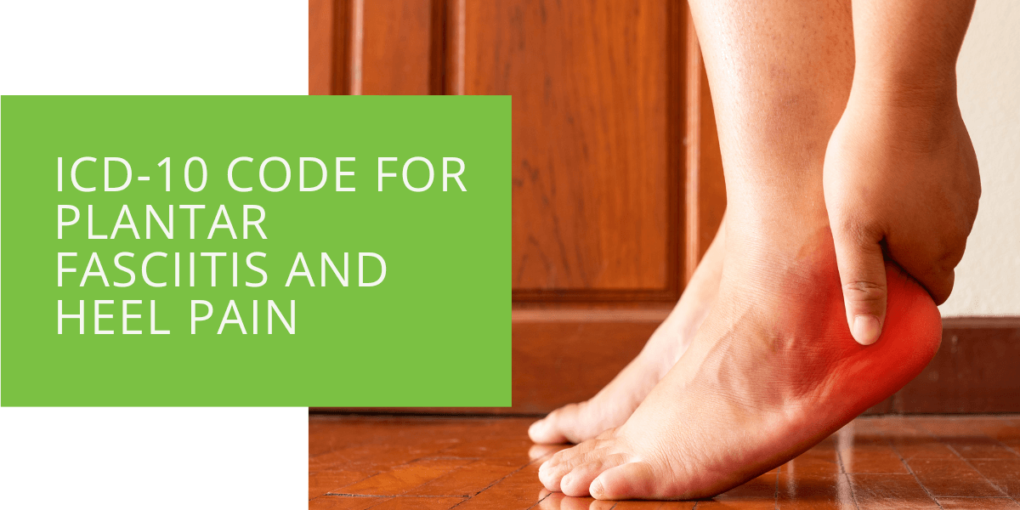ICD-10 Code for Plantar Fasciitis and Heel Pain
Plantar fasciitis and heel pain are common foot conditions that can cause significant discomfort and impaired mobility. Proper diagnosis and treatment are important for managing these conditions and improving quality of life. In the medical field, diagnoses are often recorded using standardized codes, known as ICD-10 codes.
In this article, we will explore the ICD-10 codes for plantar fasciitis and heel pain, as well as provide an overview of these conditions and common treatment options.
Plantar fasciitis and heel pain are common foot conditions that can cause significant discomfort and impaired mobility. Proper diagnosis and treatment are important for managing these conditions and improving quality of life. In the medical field, diagnoses are often recorded using standardized codes, known as ICD-10 codes.
In this article, we will explore the ICD-10 codes for plantar fasciitis and heel pain, as well as provide an overview of these conditions and common treatment options.
What Is the ICD-10 Code for Plantar Fasciitis?
The ICD-10 code for plantar fasciitis is M77.2. This code is used to classify and record diagnoses of plantar fasciitis in medical records and billing systems.
What Is the ICD-10 Code for Heel Pain?
There is no single ICD-10 code for heel pain because heel pain can be caused by a wide variety of conditions. Some common causes of heel pain include plantar fasciitis, Achilles tendonitis, heel spurs, and stress fractures. Each of these conditions has its own specific ICD-10 code, which is used to classify and document the diagnosis in medical records.
For example, plantar fasciitis is coded as M72.2 in the ICD-10, while Achilles tendonitis is coded as M77.1. Heel spurs are coded as M77.30 (calcaneal spur, unspecified foot), M77.31 (right foot), and M77.32 (left foot), and stress fractures of the heel are coded as M84. 3
It is important for healthcare providers to accurately diagnose and code the specific cause of heel pain in order to provide the most appropriate treatment and to accurately track and report on the prevalence of different conditions.

What is Plantar Fasciitis?
Plantar fasciitis is a common condition that causes pain in the heel and bottom of the foot. It is caused by inflammation of the plantar fascia, a thick band of tissue that runs along the bottom of the foot and connects the heel bone to the toes. The plantar fascia helps to support the arch of the foot and absorb shock during movement.
Plantar fasciitis is often caused by overuse or strain on the plantar fascia, such as from prolonged standing or walking, or from wearing shoes with poor arch support. It can also be caused by other factors such as obesity, flat feet, or high arches.
Symptoms of plantar fascial fibromatosis may include heel pain that is worse in the morning or after periods of inactivity, pain when walking or standing for long periods, and tenderness or stiffness in the heel and bottom of the foot.
What are ICD-10 Codes?
ICD-10 (International Classification of Diseases, Tenth Revision) codes are standardized codes used to classify and record medical diagnoses and procedures. They are used in medical billing and record-keeping to help ensure accurate and consistent reporting of diagnoses and procedures.
ICD-10 diagnosis codes are organized into categories based on the type of condition or procedure being coded. For example, codes for injuries and poisonings are in one category, while codes for diseases of the musculoskeletal system and connective tissue are in another.
ICD-10 codes are updated periodically to ensure that they reflect the latest medical knowledge and advances. The current version, ICD-10-CM (Clinical Modification), is used in the United States and includes codes for a wide range of conditions and procedures.

What Are Common Treatments for Heel Pain?
Treatment for heel pain will depend on the specific cause of the pain and the severity of the condition. Some common treatment options for heel pain include:
- Rest and ice: Resting and applying ice to the affected area can help reduce inflammation and pain.
- Stretching: Stretching the muscles and tendons in the foot and lower leg can help improve flexibility and reduce strain on the plantar fascia.
- Orthotic inserts: Wearing shoes with good arch support and using orthotic inserts can help distribute weight evenly across the foot and reduce strain on the plantar fascia.
- Physical therapy: Physical therapy exercises can help strengthen the muscles in the foot and lower leg and improve flexibility.
- Corticosteroid injections: In some cases, a corticosteroid injection may be used to reduce inflammation.
- Surgery: In rare cases, surgery may be necessary to release the plantar fascia or remove a heel spur.
Conclusion
Plantar fasciitis and heel pain are common foot conditions that can cause significant discomfort and impaired mobility. Proper diagnosis and treatment are important for managing these conditions and improving quality of life. The ICD-10 codes M77.2 is used to classify and record diagnoses of plantar fasciitis, in medical records and billing systems.
Treatment options for heel pain may include rest and ice, stretching, orthotic inserts, physical therapy, corticosteroid injections, and surgery. It is important to work with a healthcare provider to determine the most appropriate treatment plan for your specific condition and needs.

